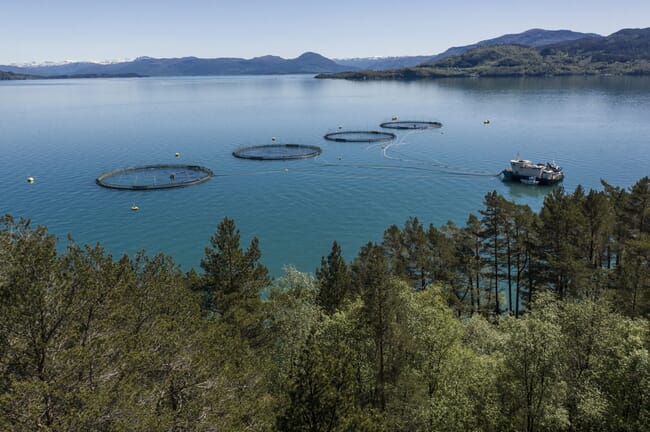
© Bremnes Seashore
Bremnes Seashore recently electrified the entire operation of its site in Loddetå in a project that involved input from Bellona and ABB. The event captured the attention of the Norwegian Prime Minister, Erna Solberg, who said “I hope this is just the start of a complete electrification of the aquaculture industry along the entire coast.”
While around 70 per cent of the country’s fish farms have already converted to shore power, Bremnes Seashore is the first company to run electricity right to its salmon pens. This means that all work operations on the pens can be electrically operated. The company has also invested in a hybrid catamaran that mainly runs on battery.
The decision to go fully electric at Loddetå means that the company will save 110,000 litres of diesel fuel per year, according to a press release issued by Bellona. However, Christian Eriksen, head of policy and research at Bellona argues that “there’s still much to be done. By some estimates, as many as 500 aquaculture farms still rely on diesel generators for power.”
“Aquaculture must reduce its climate gas footprint, and emissions from production is a part of this,” says Eriksen. “Through electrification, fish welfare increases, and the risk of diesel spills are reduced. Additionally, all noise from diesel generators is eliminated. This improves the work environment and helps the local community.”
According to Bellona, a medium-sized fish farm that relies on diesel generators can generate as much carbon dioxide as 70 private cars. They have calculated that if Norway’s entire aquaculture industry abandoned fossil fuels in their operations, it would prevent about 300,000 tonnes of carbon dioxide form ending up in the atmosphere – the equivalent of taking 150,000 cars off the road.

